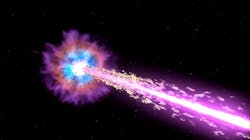RadiaBeam to develop transportable gamma ray generator to detect explosives, drugs, and nuclear material
ARLINGTON, Va. – U.S. military researchers needed a transportable gamma ray radiation generator for test and measurement test and measurement to detect nuclear materials, conventional explosives, and illegal drugs. They found their solution from RadiaBeam Technologies LLC in Santa Monica, Calif.
Officials of the U.S. Defense Advanced Research Projects Agency in Arlington, Va., announced a $10.2 million contract to RadiaBeam on Friday for the Gamma Ray Inspection Technology (GRIT) program.
A transportable gamma ray radiation generator also would be useful for detection applications like elemental imaging, non-destructive inspection of additive manufactured components, medical diagnostics, to help scientists understand detailed nuclear structures.
GRIT will develop the critical subsystem and component technologies, support system integration, and perform the testing necessary to demonstrate these new capabilities.
Related: Locked down, sensors everywhere
In the DARPA GRIT program's first phase, RadiaBeam engineers will develop a Laser-Compton approach for meeting GRIT program objectives and carrying out relevant system demonstrations.
DARPA is asking the company to develop a prototype gamma ray generator able to produce intense, tunable, and narrow- bandwidth gamma rays using techniques and emerging component technologies small enough for transportable systems.
Gamma rays are penetrating electromagnetic radiation caused by the radioactive decay of atomic nuclei. Gamma rays are the shortest wavelength of electromagnetic waves, and impart the highest photon energy.
DARPA wants the ability to produce tunable gamma rays from ten of kilo electron-volts (keV) to more than 10 mega electron-volts (MeV) of energy intensities as high as 1012/second with sub 1 percent bandwidth.
Related: NASA blocks radiation with simple software tools
Such a technology provides the ability to characterize objects non-destructively not only for their elemental content, but also for their nuclear composition.
On this contract RadiaBeam will do the work in Santa Monica, Menlo Park, and Los Angeles, Calif.; as well as in Paris, and will be finished by March 2021.
For more information contact RadiaBeam Technologies online at https://radiabeam.com, or DARPA at www.darpa.mil.
